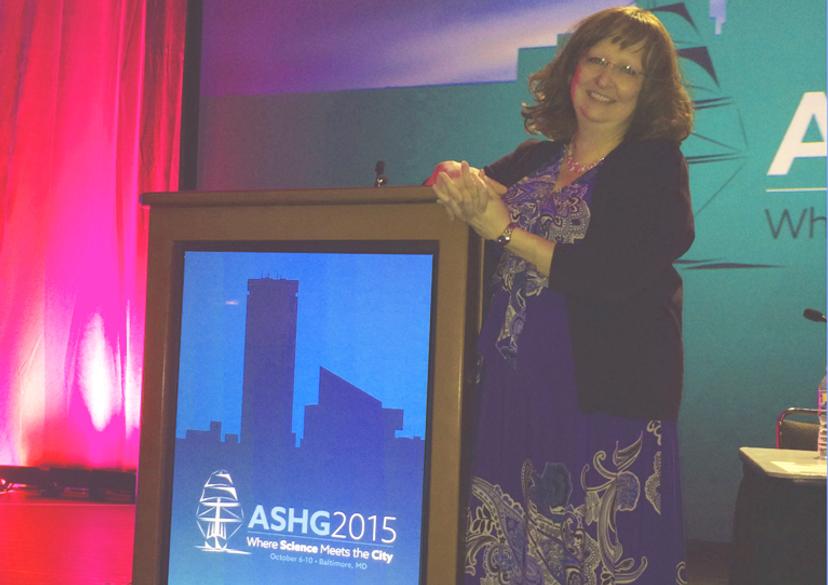Adjusting to Changing Regulation, Integrating New Technologies and Moving with the Times at ASHG 2015
SelectScience spoke to Dr Chris Gunter, ASHG 2015 Program Chair, about this year’s show
4 Nov 2015

Dr Chris Gunter, Associate Director of Research at the Marcus Autism Center & Children's Healthcare of Atlanta and Associate Professor at Emory School of MedicineASHG The American Society of Human Genetics (ASHG), founded in 1948, is the primary professional membership organization for human genetics specialists worldwide. The Society’s nearly 8,000 members include researchers, academicians, clinicians, laboratory practice professionals, genetic counselors, nurses and others who have a special interest in the field of human genetics.
The American Society for Human Genetics meeting (ASHG) 2015 is the largest human genetics meeting and expo worldwide, attracting over 6,500 attendees and over 200 exhibitors. SelectScience spoke to Dr Chris Gunter, Program Chair of ASHG 2015, on the themes that stood out at ASHG 2015, up-and-coming technologies and methods in the field of human genetics and the challenges faced by geneticists today. When not hosting discussions on cutting-edge science, Dr Gunter is the Director of Communications at the Marcus Autism Center & Children's Healthcare of Atlanta. She is also an Associate Professor in Pediatricsat Emory School of Medicine.
“I’m a human geneticist by training”, explained Dr Gunter, “but have also been involved in science communication, working as an editor at Nature, and more recently with bioRXiv.” Scientific communication was a big theme at this year’s ASHG, witha very well-received Distinguished Speakers Symposium on the topic. The Program Committee also relaxed of certain policies to make it easier for researchers to share their work. “We listened to a lot of feedback from our members, and decided we couldn’t fight the inevitable any more”, revealed Dr Gunter. Unless the owners opt-out, pictures of posters were allowed this year, and a website has been set up to allow sharing of presentation slides. Said Dr Gunter, “this is quite a big deal, and is very new for us” but it’s what many scientists want, and, ultimately, is the future.
Another important topic at this year’s conference was the emergence of CRISPR as a reported technique. “Last year people were talking about it a lot, saying they were going to use it. This year, at least two of the plenary talks included the use of CRISPR in functional studies, which is exciting to see,” explained Dr Gunter. CRISPR was also mentioned at this year’s policy forum, as ASHG has formed a committee to produce a policy in this area. In addition, the winners of this year’s Gruber prize, Drs Emmanuelle Charpentier and Jennifer Doudna, who won with their discovery of the CRISPR technique, gave a lecture on the future of genome editing. It was important for ASHG to decide “how we're going to lead the field in this”, explained Dr Gunter, as CRISPR will be “huge”.
NGS regulation
With the increase in the use of next generation sequencing (NGS), another concern at ASHG 2015 was the increasing regulation of the technique. In the USA in particular, regulators have been clamping down on pathway genomics “which directly affects consumer testing”, Dr Gunter explained. This regulation was addressed at this year’s “Building Bridges” session, which hosted speakers from both ASHG and the European Society for Human Genetics (ESHG). It was “fascinating” to hear how viewpoints differed between the USA and Europe, and how regulation differed too, said Dr Gunter. In the USA, the FDA is seeking to regulate the use of genomics, whereas in Europe, the ESHG is lobbying against a regulation proposed in the EU Parliament that calls for mandatory genetic counseling for all genetic tests..
The future for genetics, explained Dr Gunter is “more data”. The 1000 Genome project was published recently, which seeks to provide a comprehensive resource of genetic variability. This was a “huge project and a massive amount of data” said Dr Gunter, so better ways to interpret that data are also important. For example, with improved interpretation, a group of researchers are hoping to pinpoint the clinical significance of certain protein mutations in BRCA1, which could impact the treatments of certain cancers.
Learn more about the exciting innovations from ASHG 2015, and find out the latest news and methods in genetics research, here.
